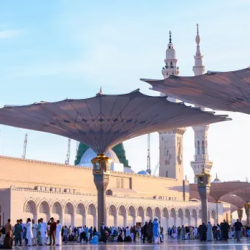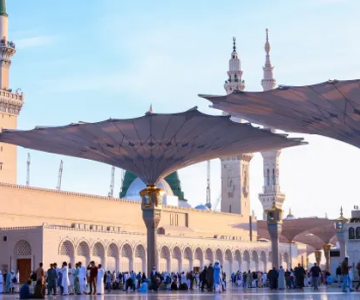4 Main Pillars of Hajj and Umrah: Essential Acts & Their Importance

The two most important pilgrimages in Islam are the Hajj and the Umrah. From the United Kingdom and all around the world, millions of people take part in the Umrah ceremonies in Makkah by booking one of the many available Umrah Packages All Inclusive. Therefore, the four main pillars are the same for hajj and umrah;

1. Assuming the State of Ihram.
• In reality, the pilgrims’ condition of immaculate purity throughout the sacred ceremonies of hajj and Umrah, symbolised by the ihram garments they wear, is the focus of the journey. As a result, the Muhrims have rituals and rules they must follow to maintain their collective holiness and sense of oneness.
• Two white, unstitched sheets are worn by men in Ihram; one covers the upper body and the other the lower. In the state of Ihram, they must not wear anything that has been sewn together.
• A woman’s regular attire can serve as Ihram so long as it is simple, modest, and in accordance with Islamic principles.
• Pilgrims are obligated to do the following before entering Ihram:
• Cut their fingernails.
• Remove any excess hair from your body.
• Ghusl must be done
• Pilgrims are required to enter the state of Ihram before entering the Miqat.
• In particular, you should not do the following when in Ihram:
• Hair and nail maintenance.
• Using olfactory enhancements such as fragrances.
• Having sexual encounters.
• Killing a non-human animal or bug (other than in self-defense).
2. Tawaf of the Holy Kaaba.
• Tawaf is the term for the seven times-around-the-Holy-Kaabah pilgrimage.
Each pilgrim must perform the ritual clockwise, with the Holy Kaabah on his or her left at all times.
• The Tawaf circuit always begins and ends at Hajar-al-Aswad. This, then, is one full cycle.
• After completing the seven circuits, travellers must pray the Salat al-tawaf in Masjid al-haram’s Maqam el-Ibrahim.
• Tawaf can be performed in one of three ways;
• Tawaf al-Qudum (Tawaf Upon Arrival).
• Tawaf al-Ifadah (the circumambulation of the Kaaba during Hajj).
• A farewell tawaf, or Tawaf al-Wida.
3. Sayee of Safah and Marwah Hills.
• Walking or running between the two hills of Safa and Marwah inside the Masjid-al-Haram is called Sayee. Hazrat Hajar (the Prophet Ibrahim’s (while) wife) performed this ritual while she walked across the hills to find water for the Prophet Ismail (AS) when he was an infant.
• The Sayee ritual consists of seven cycles.
• The first round begins at Safah and heads in the direction of Marwah Hill, and so on until the seventh and final round concludes at Marwah Hill.
• The Halq/Taqsir is the next rite of passage for pilgrims after the Sayee.
4. Standing at Arafat (for the Hajj pilgrimage):
One of the most important parts of the Hajj journey is still to stand at Arafat on the ninth of Dhul-Hijjah. It’s an essential part of the pilgrimage, so you can’t skip it. If not, then that person’s hajj isn’t complete.
From midday to evening, pilgrims congregate in the Arafat region. They pray, recite Duas, beg Allah Almighty for pardon, and do other forms of supplication at this time.
All Hajj and Umrah pilgrims must perform these four acts in order to fulfil their religious obligations. These are some piece of knowledge which every pilgrim should know before booking Umrah from any trusted Islamic travel agency uk. Therefore, it provides a chance for spiritual cleansing and for growing closer to God.


Ingen kommentarer endnu